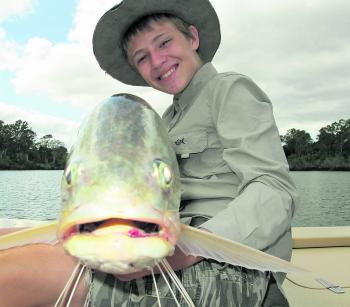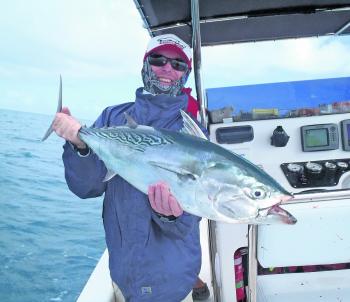It’s that time of the year when the cold really hits in South East Queensland. It’s the time when all my favourite summer species depart or go slow for the three months. You guessed it, I don’t like winter!
Long sleeve shirts, coats and jeans are not my thing, but I do have a reprieve and that’s going north for a few months guiding on Cape York! Sadly though, I must return home eventually.
On the upside, most bread and butter species like bream, whiting and flathead are in good numbers and are quite catchable in winter, they all aggregate to spawn on the full and new moons and some big catches can be made especially, over these periods.
There’s always a few bream to be caught, and flicking around lures for a big lizard can be quite satisfying, especially when a big croc comes head shaking to the surface. These big ones over 70cm are nearly always females.
Try not to keep too many big fish, as they need to spawn and I am a firm believer that there should be a closed season during their peak spawning times like with barra and reef fish.
Squid are another tasty winter treat that have arrived in numbers now. Just the other day I saw a school of a fewhundred drifting along the flats. I picked up some off the side with a new Daiwa Emraldas squid jig was too easy and they were good-sized ones in there too.
Try rocky outcrops, especially where there’s a bit of current and baitfish. Squid also love sea grass beds, and they love to feed on prawns and shrimps. They can be hard to spot, but a good set of polaroid sunnies can be a big asset. Cast well away from the squid so the lure splashdown doesn’t spook them, and use a slow retrieve to pull it past them. Most jigs are designed to imitate a prawn swimming forward, which is slow. I have seen anglers spinning for squid with speeds I would expect for offshore pelagics! Slow it down and the suckers will attack.
Snapper have started to trickle inshore, with a few big ones early as usual. Baits such as mullet and squid heads work well, but I prefer plastics and trolling hardbodies down deep. This is probably the most effective tactic for covering ground and finding bigger specimens, and any lures that break the 30ft mark will do. If trolling, a speed of 3-4 knots is perfect. Once again, find the bait schools and the snapper won’t be far away.
Another bonus while snapper fishing is the appearance of big longtail tuna and cobia around the same area. These big bruisers will take lures meant for a snapper, and this is why I stuck to 20lb braid for all my snapper work. A 20kg longtail or cobia on 12lb braid isn’t fun after the first half hour!
In the rivers, barra and kig threadfin salmon are still there. They’re a bit harder to catch, but with the help of a good sounder and some patience you will find them, and sometimes in big numbers. Getting the bites is the hard bit, but very possible with a few tricks.
Late winter, when the water temperatures are just starting to rise is the go for barra and threadies, and even a rise of 1°C can get them into feeding mode. Think outside the box and work out what they’re feeding on big banana prawns or whiting, so use the appropriate lures.
So after all, winter isn’t so bad. Just remember to rug up and get out there! You got to be in it to win it.
Reads: 8617
An early wintertime thready taken on a vibe down deep.

Big winter barra are tough, but not impossible!

Rug up for the cold and you will find a few tuna in the bay.




